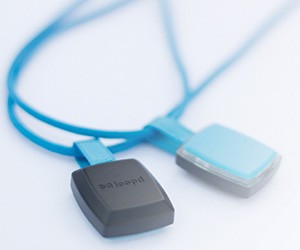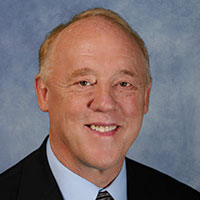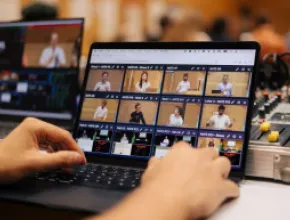Beacon technologies (small, digital “lighthouses” sending out signals that interact with mobile phone apps) are making headway for events. Companies such as DoubleDutch and Eventbase have been using this technology to automate event check-in, for networking, for wayfinding, location-aware polling, generating heat maps of crowd flow and a range of other tasks to improve the event experience for attendees.
However, this technology requires that attendees have the app installed, their Bluetooth on and their batteries charged in order for things to work. To have these criteria met for 100 percent of the attendees almost never happens, and often times this percentage of active beacon users is much smaller than that.
This is where the next generation of beacon technology comes in–wearable two-way beacons. Each attendee wears the beacon (as a badge or as attached to the lanyard). The beacon is always transmitting its BLE (Bluetooth Low Energy) signal, with a battery life of several days. With 100 percent of the event participants using it, this opens up many new capabilities.
Here are four examples of how this is playing out:
Loopd
loopd.com
Loopd provides a small two-way beacon weighing less than five grams attached to a lanyard. These beacons enable the exchange of contact information to all interested parties, the distribution of marketing materials, gamification options and extensive analytics. Real-time measurements of the number of attendees, the number of connections made among attendees and how much time each spent is part of the analytics package. Heat maps of crowd flow can be generated instantly. The beacons work with a mobile events app (Apple and Android) to allow each attendee to control the information on their Loopd badges and adjust their privacy settings.
Each attendee has a record of the time and location where they made each connection, the session they attended and the exhibitors they visited. The app also has messaging, in-app chat, notes, maps, personal schedule, survey and gamification components.
Pricing: A $2-$5 per device rental cost for each attendee, plus $6,000-$10,000 per event for analytics, plus about $5,000 for the integrated app.
SmartTrac by Hubvents
hubvents.com
SmartTrac combines a small two-way beacon for each attendee (attached to the badge lanyard) and proximity sensors in exhibit booths, meeting lounges, meeting rooms and other areas to relay relevant insights, reporting and notifications to event audiences.
For exhibitors: SmartTrac analyzes visitor profiles and behavioral attributes to identify high-value prospects, notifying the exhibitor as they arrive at the booth. Additionally, the system connects with the exhibitors’ CRM accounts, sending a notification when CRM prospects are either near or approaching the booth.
For attendees: Visitors get access to complete journey reports. These include details such as a timeline view of booths visited and all of the people met at the event, including the time of the meeting, the duration and the location. Visitors no longer need to collect, manage or risk losing business cards. Event visitors are informed about the tracking technology and are given the option to opt out of tracking by deactivating the badge tag from any tracking or data collection.
For show organizers: View very detailed, granular data about every visitor based on their interactions on the show floor. Visualize macro trends based on filters that they define, including heat maps, crowd flow and more.
Pricing for conference events with no exhibition: Pricing starts at $4 per person, including tracking sensors at all meetings.
Pricing for exhibitions: Typically, the system is sold as a high-end lead retrieval system by the show organizer to the exhibitor. With no cost to the show organizer, the revenue is made as a percentage commission on the lead retrieval charges to the exhibitor, which ranges from about $500 to $2,000 per exhibitor. This includes the event app or integration with the existing event app. Options for organizer-facing analytics and reports, without upselling to exhibitors, are also available.
Ligo by Limefy
limefy.com
With a tagline of “business networking you can wear,” Ligo uses a combination of a mobile event app and wearable beacons in the form of a smart badge. Although it has several similar features to Loopd (lead retrieval, session attendance tracking, attendee/exhibitor portals, messaging and real-time analytics), there is a strong emphasis on real-time matchmaking.
The big difference is that the badges have flashing lights that activate when attendees with strong like-interests come within close proximity. Attendees enter their interest areas in the app. Then, when a match is made, the beacon badge lights up. Attendees and exhibitors receive a timeline of all the contacts they have made during the event.
Pricing: A simple one-day networking event for 200 attendees would start at $1,000 for basic matchmaking. A three-day, 1,000-attendee event would start at about $4,000 for matchmaking, event analytics and lead retrieval, with a menu of a la carte services in addition to the base pricing.
EventBit by Experient
info.experient-inc.com/eventbit
Experient, in cooperation with TurnoutNow, uses a proprietary network of lead retrieval devices combined with a wearable “eventBit” beacon for every event attendee:
Attendees see all the exhibitors they visited and how much time they spent in specific sessions.
Networking recommendations pair them to attendees with matching interests. EventBit also displays event/health metrics such as hours spent on the show floor and the estimated distance walked. Attendees instantly see how much time they spent in specific sessions and receive recommendations based on, once again, their actual behaviors of what sessions they had already visited. Attendees also receive recommendations for attendee networking based on their cumulative behaviors, pairing them with attendees with matching interests.
Exhibitors get more information than simple lead contact data, including total booth traffic, dwell times, traffic by demographics and more. This gives the exhibitor access not only to the hundreds of leads they collected, but also to the potentially thousands of people who browsed their booth that weren’t scanned.
Show organizers get real-time show floor analyses and heat maps indicating how many attendees are located where, along with their individual demographics. They can track any location by placing a small eventBit receiver anywhere: session rooms, registration areas, VIP lounges, product showcases, presentation areas, etc.
EventBit tracks every event participant in any location desired, not just volume, but exactly who was there by:
- Registration type
- Where they went
- What events they attended
- How long they stayed
- What content interested them
- What products drew their attention
- What educational content they consumed
Pricing is somewhat variable depending on how much lead retrieval equipment is in use. But, on average, the charges are $3 per rental/tag and about $400 per receiver not on the show floor. So, an average cost would be $3 per beacon tag rental plus about $15,000-$20,000 for a full set-up and analysis package, including 30 to 40 receivers (for sessions, keynotes, VIP zones and show floor hotspots).
As each of these technologies requires a two-way beacon for each attendee, they are more expensive than simply using mobile phone apps and location-based one-way beacons.
However, the broader usage by all attendees, their ease of use, the extensive analytics and the increased functionality may soon make this the technology of choice for many events.







